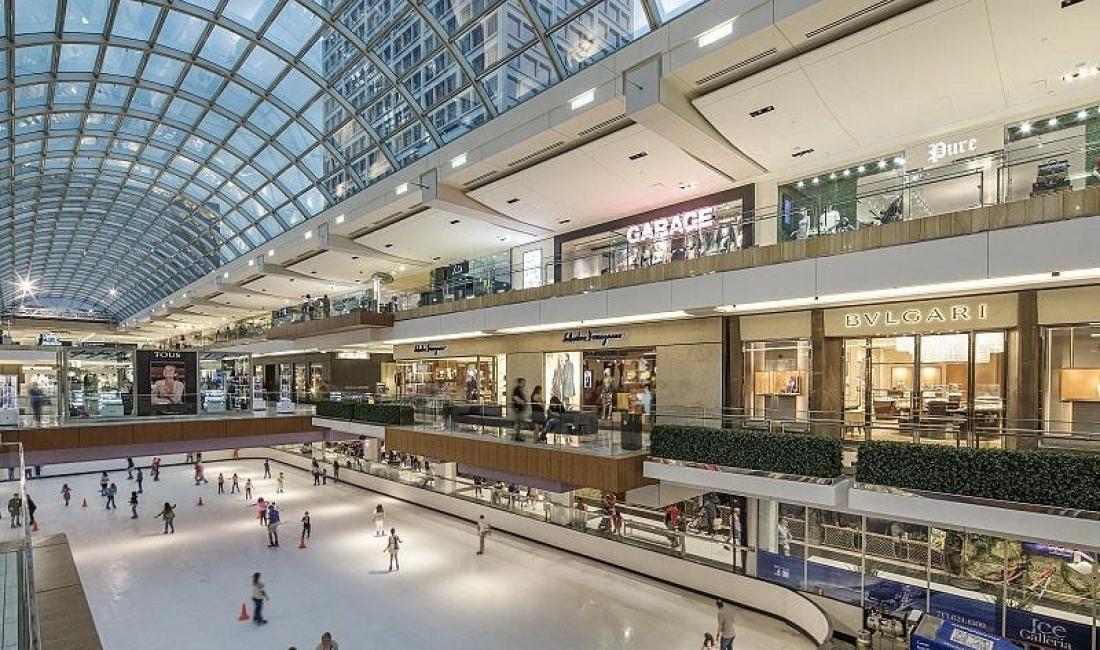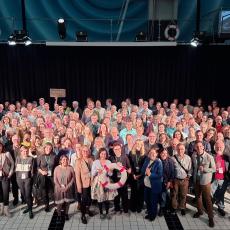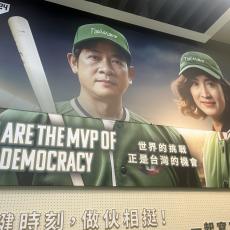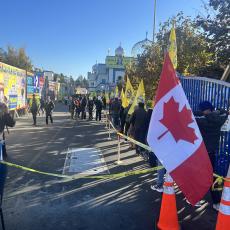Returning the mall to the original Austrian vision.
Story and photo republished from the Future of Where substack. You can subscribe to Future of Where here.
Eighty years after Victor Gruen invented the regional shopping mall – weirdly, as his attempt to bring Viennese urbanity to suburban America – we are in the middle of the Great Mall Dismantling. Real estate experts say we are in the midst of shrinking from 3,000 regional malls in the country – essentially, at least one in every community of any size – down to 200. And they’re being converted into everything.
The glitziest transitions have been to upscale, pseudo-urban residential and commercial districts, like Santana Row in San Jose. But we’ve also seen malls transition – fully or partially – into high schools, government offices, health-care facilities, data hubs, megachurches, and practically everything else you can think of. And, of course, in some cases they are hosting multifamily housing even as some retail remains. The bottom line is that these are huge parcels of land located on infill sites, with plenty of parking and in many cases very large and solid existing structures.
Yet, with the exception of exclusive upscale projects like Santana Row, they’re not really places. Like the malls they replaced, they are pretty utilitarian places – places where you go to work or school or see the doctor or go to worship and then leave.
Which is not what Victor Gruen had in mind when he devised the idea of the regional mall in the 1940s and implemented it, for the first time, in the 1950s at Southdale Center outside Minneapolis. Gruen imagined that a mall would include civic spaces like libraries and post offices as well as retail and people would linger over coffee, just as they did in Vienna.
The libraries and post offices mostly didn’t materialize, though some malls did provide a community meeting room off in an obscure corner beyond the bathrooms near the loading dock. Yet the lingering did occur – often to the benefit of retailers who sold more stuff – and people improvised, using malls for example as places to do extensive morning walks when the weather outside was either too hot or too cold.
So, in a certain weird way, when the regional mall shuts down or morphs into something different, a suburban community loses its center.
How, then, do you turn an old mall into something other than an upscale shopping district with expensive apartments or a utilitarian location for some large-scale tenant?
The Urban Hotel of the Suburbs
You do it, I think, by imagining it as some version of what I call the “Urban Hotel”.
As regular readers of this Substack newsletter will recall, I believe that post-COVID American communities are reorganizing themselves into the “Suburban Workshop” and the “Urban Hotel”. With the rise of remote work, many people are doing their jobs at or near their home in the suburbs – that’s the Suburban Workshop. But people and organizations and companies still need dense places to gather for face-to-face interaction of all kinds – everything from business meetings to concerts – those are the “Urban Hotels”
Partly because I live in a big-city Urban Hotel near a large convention center and baseball stadium, I tend to think of Urban Hotels as Downtown-type places, where face-to-face contact occurs on a large scale. But the truth of the matter is that the suburbs need “Urban Hotels” as well. After all, as I have pointed out in this space, as more people work at home rather than in sophisticated job centers, they need to up their game. Chain restaurants and utilitarian spaces won’t do the trick.
And this is where the Dead Mall comes in handy. With a little effort, it can be converted into the suburban version of the Urban Hotel: a place where suburban workers can go near their house for all kinds of face-to-face contact, ranging from business meetings to entertainment to restaurants and bars.
To be fair, on some level this is already happening. As both department stores and smaller retail businesses exit regional malls, a greater variety of activities is being introduced, including more restaurants and in a few cases some hotels. Often this happens incrementally; as one department store exits, it’s replaced by a more activity-based use.
But often this incremental change consists pretty much of retail real estate owners plugging holes. A traditional department store exits and a Target moves in, often with a direct exit to the parking lot and minimal interaction with the interior of the mall.
So to use Dead Malls as suburban-scale Urban Hotels, both cities and mall owners have to approach this transition with intentionality. Of course the mall owner wants to plug the holes and lease as much space as possible. Or else just exit. But the future of regional mall sites isn’t just plugging holes. It’s restoring and even enhancing the regional mall’s previous role as a community center – only doing it with a combination of civic and private face-to-race uses.
This means more than just saying you’re going to convert to “mixed use,” because oftentimes that just means throwing up some apartments in unused parts of the parking lot. And it means more than trying to build a fake suburban downtown around “walkability,” because too often that just means creating a better pedestrian experience in a big retail center.
Intentionality means including those libraries and post offices and other civic uses in the Urban Hotel. It means including hotels, literally speaking, rather than just letting them be thrown up out at the freeway interchange surrounded by parking, and surrounding those hotels with restaurants. It means concentrating meeting space and live entertainment venues in these face-to-face locations as well.
This kind of intentionality isn’t easy, not least because shopping mall land ownership is complicated. Often the basic mall is owned by one set of investors, while the old department store pads – originally owned by Sears or JC Penney – is owned by another set of investors. But for the suburban-scale Urban Hotel to succeed, intentionality is necessary.
Returning The Mall to Victor Gruen’s Original Vision
When Victor Gruen invented the American suburban shopping mall, he was trying to create overnight an urban experience that had taken centuries to organically develop in Vienna. Like so many other good ideas about suburbs, Gruen’s idea got bastardized over time to be only about one thing: making money off of retail customers.
But today the whole model has been turned upside down, and we need to embrace the change. In the future, real estate investors in central locations will make money by encouraging face-to-face contact in locations with both public and private uses. So let’s be intentional about those Dead Mall sites and bring the Urban Hotel to the suburbs.



